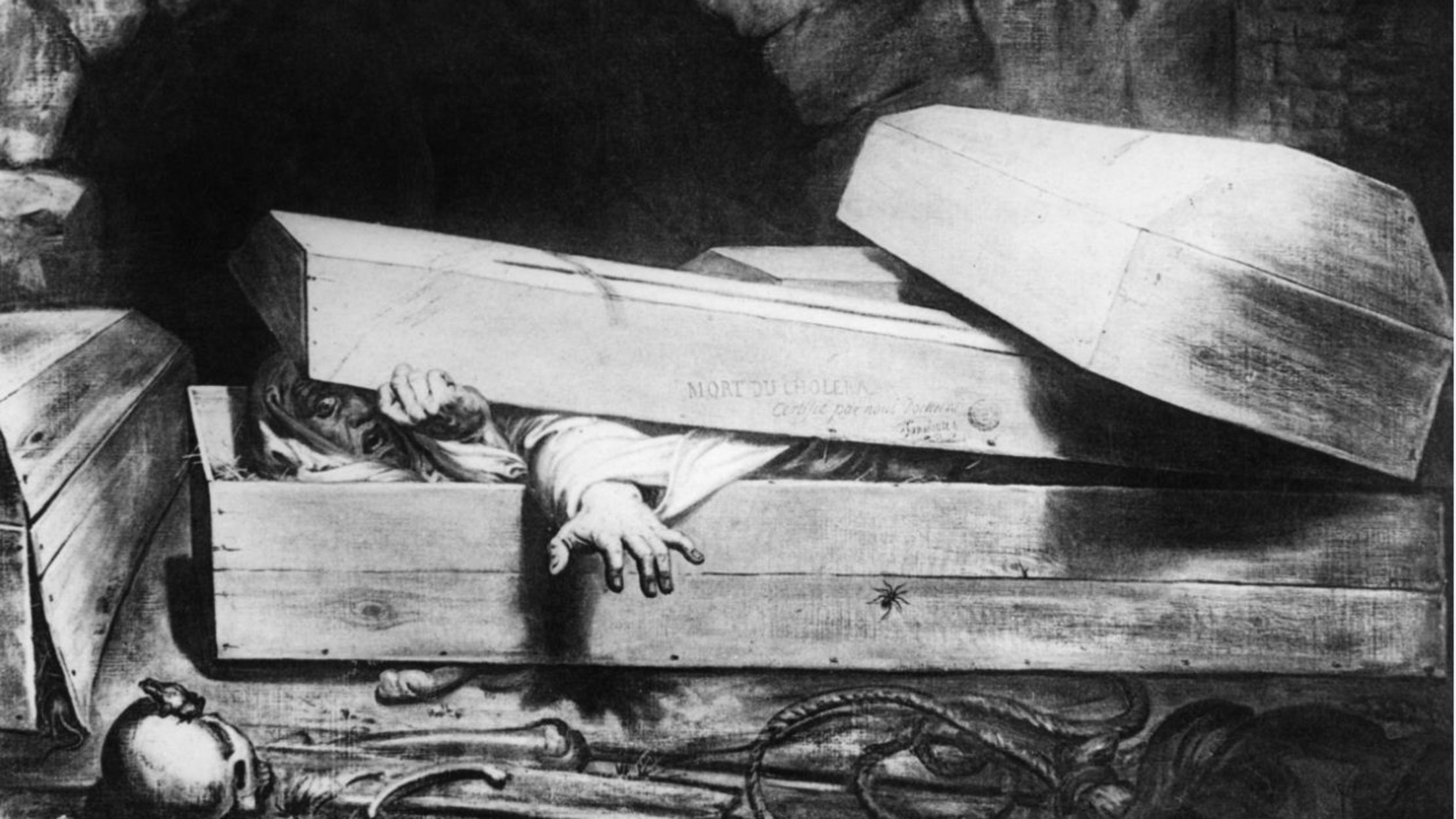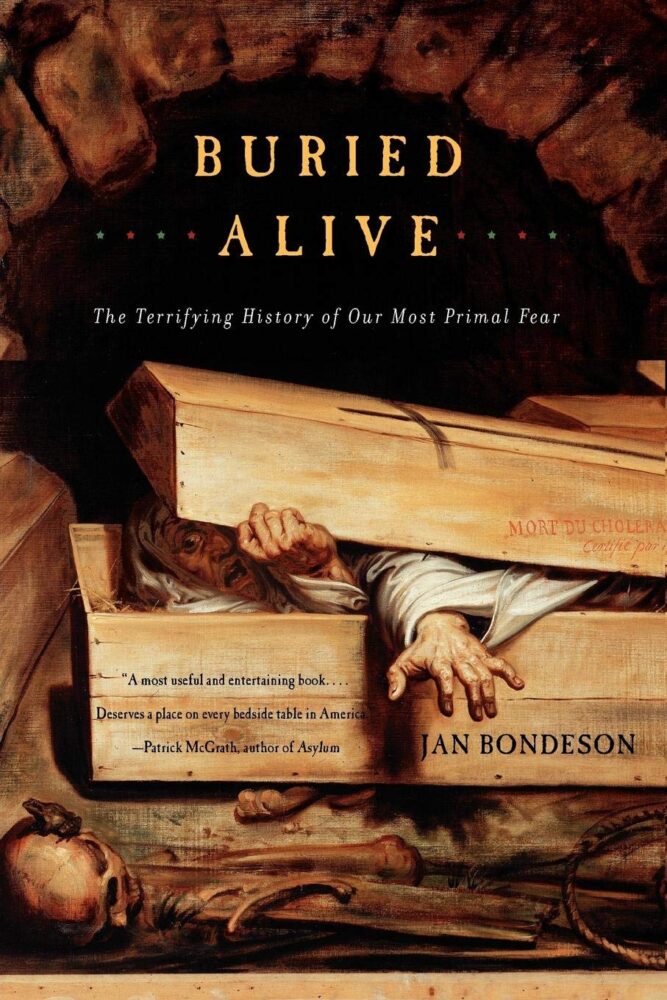In his book Buried Alive: The Terrifying History of Our Most Primal Fear, Jan Bondeson made us familiar with some of the measures taken in the 1800s to guard against premature burial’ or being buried alive, including coffins that came with a bell or flag that would warn passers-by of any movement below the ground. Bondeson managed to unearth a few cases of people who went under the earth while still breathing.
Being buried alive definitely tops on the list of most terrible ways to die, and it used to happen a lot in the earlier days when there existed a lack of advancement in medicine study and it was much more difficult to determine if someone was really dead – or just in a coma or paralyzed and presumed dead.
Now that we may be assured that the days of inferior medical knowledge are mostly behind us and the use of stethoscope technology given by French doctor Eugène Bouchut has enabled us to listen for the existence of a heartbeat, there’s no need to let out a sigh of relief. We still haven’t rid humanity of this horrific experience quite yet. As some of these stories point out, there is an idea of the evil in the world that still makes the threat of being buried alive a valid concern. And if you’ve got taphephobia( the fear of being buried alive), good luck sleeping tonight!
1. Essie Dunbar

2. Philomèle Jonetre
A 24-year-old French lady named Philomèle Jonetre contracted cholera in 1867. Not long after, she was assumed dead. As was the custom, a minister showed up to direct the last holy observances, and Jonetre’s body was put in a final resting place. Just 16 hours later, her body was brought down six feet underground.
But suddenly, a gravedigger heard Jonetre thumping against her casket cover and instantly eliminated her from the earth. Despite the fact that no breath was evident when a lit candle was set right under her nose, distinct rhythmical sounds could be heard in her chest, and she displayed some muscle contraction and eyelid twitching. This didn’t keep going long, notwithstanding; Jonetre was officially pronounced dead the following day and was buried a second time.

3. Angelo Hays
Bondeson calls the instance of 19-year-old Frenchman Angelo Hays “likely the most noteworthy 20th-century occurrence of supposed premature burial” In 1937, Hays wrecked his motorbike, with the effect tossing the youngster from his machine heedlessly into a brick wall. Hay’s face was deformed to such an extent that his parents weren’t permitted to see the body. After finding no heartbeat, the doctors proclaimed Hays dead, and after three days, he was buried underneath the ground. But because of an examination helmed by a neighborhood insurance agency, his body was unearthed two days after the burial service.
A lot to those at the forensic institute’s surprise, Hays was still warm. He had been in a profound trance-like state and his body’s decreased requirement for oxygen had kept him alive. After numerous surgeries and some rehabilitation, Hays recovered completely. In fact, he became a French celebrity: People ventured out from far off to talk with him, and during the 1970s he went on a visit with an (exceptionally beefed up) security final resting place he developed including thick upholstery, food storage, latrine, and even a library.

4. The Shoemaker
In 1822, a 40-year-old German shoemaker was laid to rest, but there were questions about his death from the beginning. Albeit the shoemaker’s family affirmed his passing—he looked dead, they said—nobody could distinguish any odor or unbending nature in the corpse. In any case, the memorial service went on as arranged. Be that as it may, as the gravedigger was scattering the last shovelsful of soil onto the grave, he heard a thumping from beneath.
Reversing his process and now removing the earth as quickly as possible, the gravedigger found the shoemaker moving inside his coffin. His arms were drawn upward, he wasn’t cold, and when a going to doctor opened a vein, blood streamed everywhere on the shroud. Throughout the span of three days, revival endeavors were made, yet all endeavors were unbeneficial. The shoemaker was declared dead once more and laid to rest for a second and final time.
Also read :
















